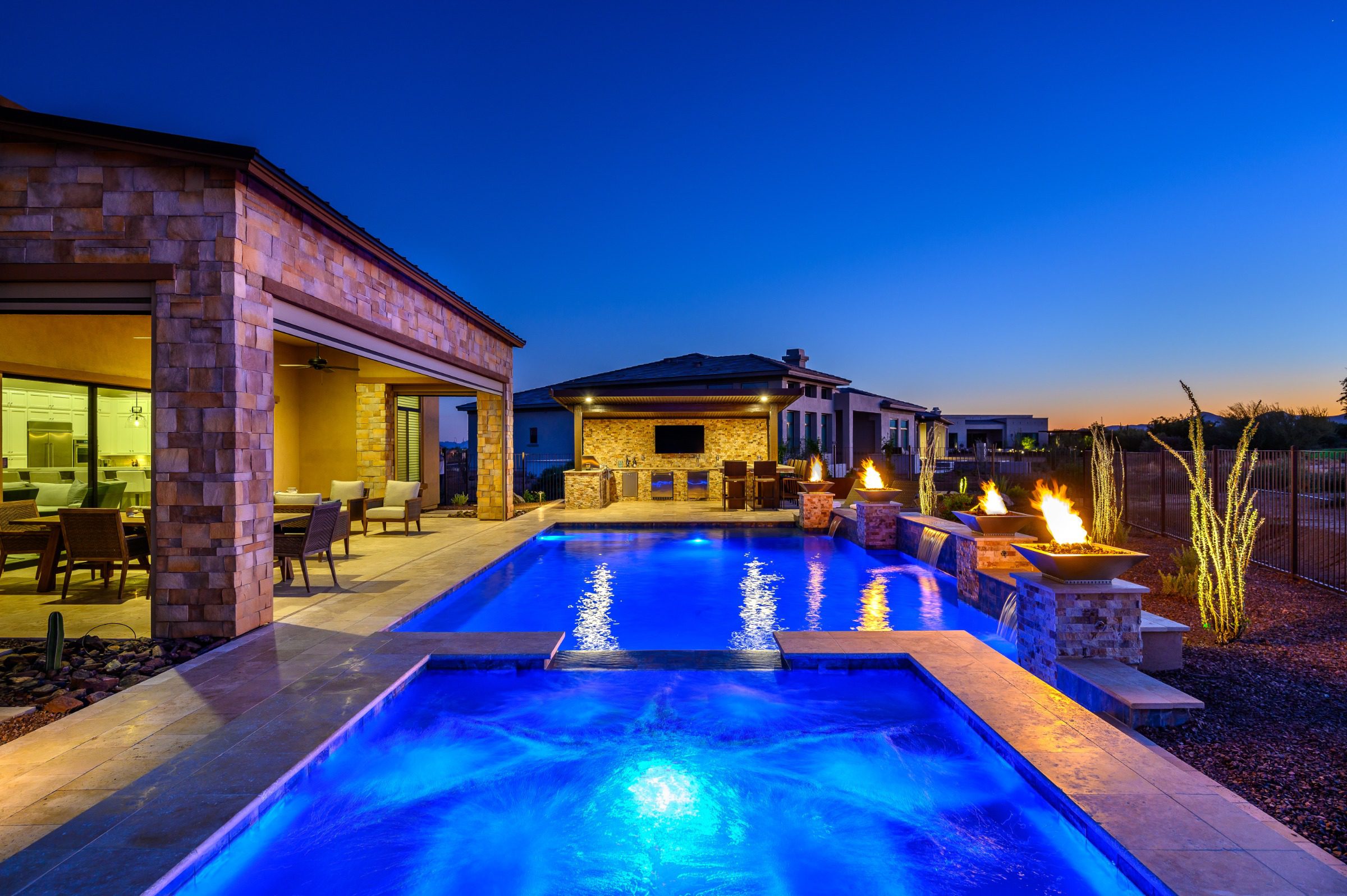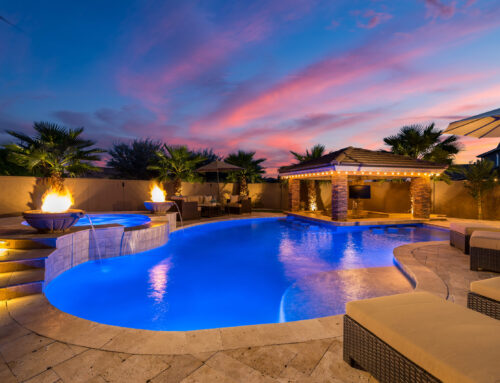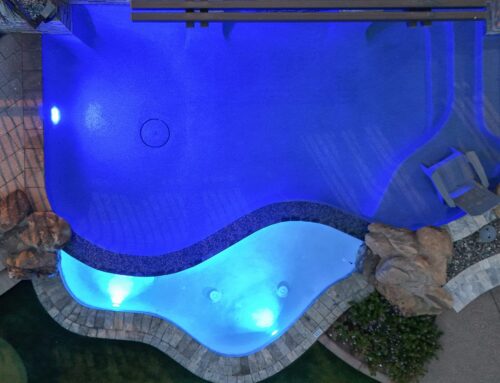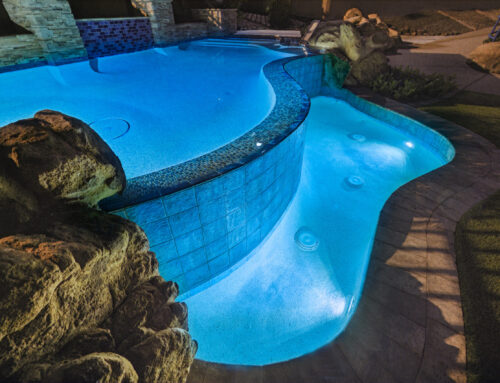Pool lights are essential for creating a safe and inviting ambiance for nighttime swimming, but many pool owners wonder how long these lights actually last. Whether you’re installing new pool lighting or simply maintaining an existing setup, it’s important to understand the lifespan of different types of lights and what factors can impact their longevity. Pool lights vary widely in their lifespans based on their type, usage, and maintenance. Here, we’ll break down the different pool light types and provide you with key tips on how to maximize their longevity.
Types of Pool Lights and Their Lifespan
There are several types of pool lights on the market, each with a distinct lifespan. The most common include incandescent, halogen, and LED lights.
Incandescent Pool Lights
Incandescent lights, one of the oldest lighting options, typically last around 1,000 hours. They provide a warm glow but are not very energy efficient and require frequent replacements. While they’re relatively inexpensive upfront, the frequent replacement costs and higher energy usage can make them more costly in the long run.
Halogen Pool Lights
Halogen lights offer slightly better performance than incandescent lights, with an average lifespan of around 2,000 to 4,000 hours. They are brighter than incandescent lights but still generate a lot of heat and consume more energy. Halogen lights are often seen as a middle-ground option, offering better performance than incandescents but still falling short of the durability and efficiency of LEDs.
LED Pool Lights
LED pool lights have become the gold standard due to their impressive lifespan, energy efficiency, and performance. LED lights can last anywhere from 25,000 to 50,000 hours, depending on usage and maintenance. This means they can often provide up to 10 years of reliable lighting before needing replacement. In some cases, high-quality LEDs might last even longer if they are well-maintained. LEDs are also more environmentally friendly, using significantly less energy than incandescent or halogen bulbs.
Impact of the Incandescent Light Bulb Ban
In 2023, the United States enacted a ban on the production and sale of incandescent light bulbs as part of efforts to increase energy efficiency. This regulation means that pool owners still using incandescent bulbs will need to transition to alternative lighting solutions, such as LED or halogen. The ban aligns with global efforts to reduce energy consumption and carbon emissions, and it encourages the adoption of more efficient lighting technologies. For pool owners, this means considering long-term investments like LED lights, which not only comply with regulations but also offer superior performance and durability.
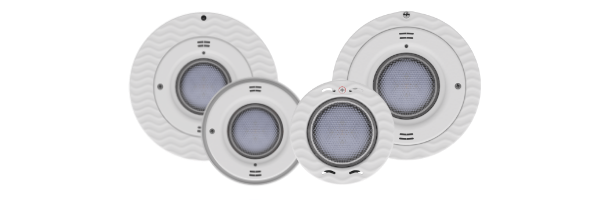
Factors Affecting Pool Light Lifespan
Several factors can influence how long your pool lights will last. Here are some key considerations:
- Usage Frequency: The more often you use your pool lights, the faster they will wear out. For example, incandescent and halogen lights may only last a couple of seasons with frequent use, while LEDs, even with daily operation, will last many years.
- Water Chemistry: Poor water chemistry, particularly imbalanced pH or high chlorine levels, can corrode the fixtures and damage the lights, reducing their lifespan. Maintaining proper water balance is critical to preserving both the light bulbs and their fittings.
- Installation Quality: Improper installation can lead to premature failures. For example, poor sealing can allow water to leak into the fixture, damaging the bulb and its components. Professional installation can mitigate many of these risks.
Signs Your Pool Lights Need Replacement
Even though some pool lights, like LEDs, can last for many years, they do eventually require replacement. Watch for these signs that it’s time to change your pool lights:
- Dimming or Flickering: If your pool lights are flickering or appear dimmer than usual, it’s a strong indication that they are nearing the end of their lifespan.
- Color Changes: Pool lights that are shifting from their original color or appear discolored could be failing and in need of replacement.
- Frequent Interruptions: If the lights frequently go out or experience intermittent problems, it’s best to inspect the connections and, if necessary, replace the bulb or fixture.
Maintaining Your Pool Lights
Proper maintenance can significantly extend the lifespan of your pool lights. Here are some tips:
- Regular Cleaning: Keep the lights clean from dirt, debris, and algae buildup, which can reduce the brightness and cause overheating.
- Routine Inspections: Inspect the light fixtures for any signs of damage, such as cracks or leaks. Prompt repairs can prevent further damage.
- Water Chemistry: Regularly check your pool’s water chemistry to ensure that it’s not too harsh on the lights and fixtures.
Blue Square Manufacturing’s Pool Lighting Solutions
If you’re considering upgrading or replacing your pool lights, Blue Square Manufacturing offers a range of high-quality pool lighting solutions. Our pool lights for new construction and renovation/replacement projects are designed with longevity and energy efficiency in mind. These lights use advanced LED technology, providing a brighter and more vibrant light while consuming significantly less energy compared to traditional bulbs. Additionally, Blue Square offers replacement bulbs that are compatible with various lighting systems, making it easier for pool owners to switch to a more sustainable solution.
Most popular Blue Square pool lights:
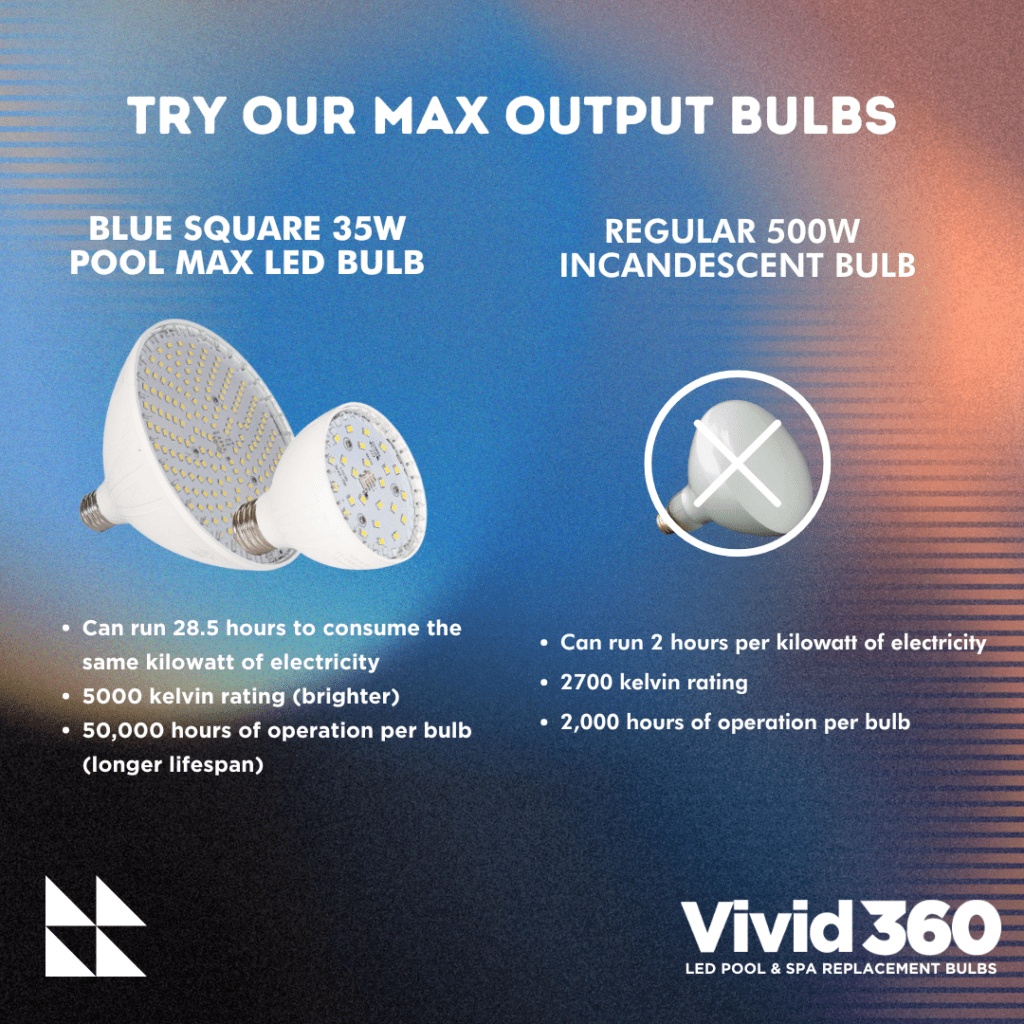
Blue Square’s pool lights are also designed to withstand the harsh environments of pools, including exposure to chemicals and water. With high-quality materials and efficient LED technology, their products offer both durability and performance, making them a great option for those looking to replace older, less efficient lights.
Conclusion
Understanding the lifespan of your pool lights helps in making informed decisions about replacements and upgrades. With the recent ban on incandescent bulbs, LED lights have become the optimal choice for long-lasting, energy-efficient pool lighting. Companies like Blue Square Manufacturing provide cutting-edge pool lighting solutions that ensure your pool stays well-lit, vibrant, and compliant with new regulations.
Upgrading your pool lighting not only enhances your swimming experience but also reduces energy consumption and maintenance costs in the long run. When it’s time to replace your pool lights, consider investing in LED technology for maximum longevity and efficiency.
Frequently Asked Questions
How long do pool lights last?
The lifespan of pool lights depends on the type. Incandescent lights typically last around 1,000 hours, halogen lights up to 4,000 hours, and LED pool lights between 25,000 and 50,000 hours.
What factors affect the lifespan of pool lights?
Key factors include usage frequency, water chemistry, installation quality, and regular maintenance. Harsh water conditions or frequent use can shorten the lifespan of pool lights.
Are LED pool lights worth the investment?
Yes, while LED lights may have a higher upfront cost, they last significantly longer and are much more energy-efficient compared to incandescent and halogen lights, resulting in long-term savings.
Can I replace pool lights myself?
Pool lights can be replaced as a DIY project if you have experience with electrical work. However, improper installation can lead to leaks or damage, so hiring a professional is often recommended.
What are the signs that my pool lights need to be replaced?
Signs include dimming, flickering, color changes, frequent interruptions, or complete burnout. Visible damage to the fixtures or corrosion also indicates it’s time for a replacement.
How can I extend the life of my pool lights?
Regular maintenance, including cleaning the lights, ensuring proper water chemistry, and inspecting for damage, can help extend the life of your pool lights.



